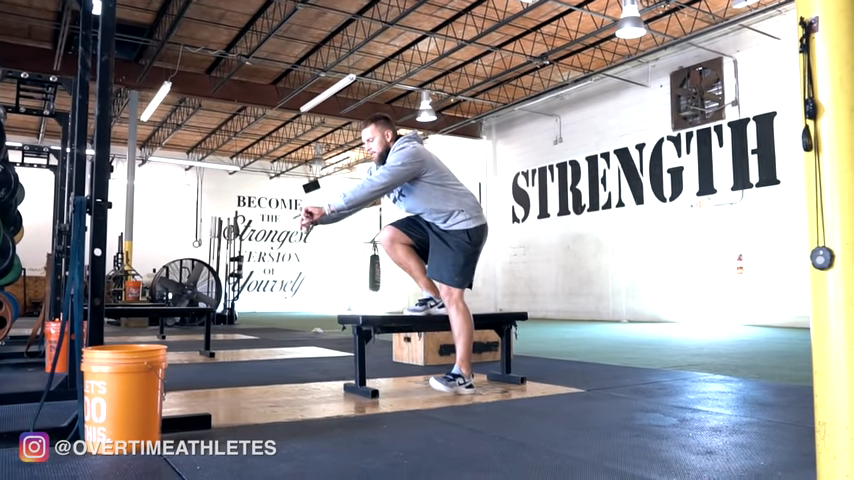Vertical Jump Training At Home Workout
We’re facing a pandemic at the time of me writing this. Gyms are closed, sports are cancelled, people are confined to their homes. I want to help continue to get better during these times… So, I decided to share a vertical jump training at home workout.

This home vertical jump workout is completely bodyweight. No weights needed.
And it will give you the stimulus you need to continue your athletic development and get a bigger vertical jump at home.
Let’s get into this vertical jump training at home workout:
1. Pogo Jumps 2x10s
Make sure you limit your knee involvement as much as possible when you perform these pogo jumps. More than that, make sure you spend as little time on the ground as possible and land soft after every jump.
2. Squat Jumps 2x10s
Squat jumps incorporate the knee and hip into your jump. The same cues apply here as the pogo jumps. Make sure you land soft, stick your landing, and spend as little time on the ground as possible.
3. Lunge Jumps 2x10s
Lunge Jumps incorporate all of the joints of the lower limb while putting emphasis on one leg at a time. Make sure that you only lunge to quarter squat depth and try to keep your weight on your front leg as much as possible.
4. Box Jumps 8×1

You’ll have to get a little creative here. Find a surface you can safely jump onto. It doesn’t matter what the height is, jump as high as you can no matter what.
5. Squat 3×6 [x/2/x]
For these bodyweight squats we’re using an two second isometric tempo to increase motor unit recruitment in the muscles involved in the squat. We’re effectively teaching our bodies to recruit larger, fast-twitch muscles more often.
6. Wide Squat 4×3 [3/1/x]
Next, we’re going to widen the stance of the squat and switch to a three second eccentric tempo. Eccentrics allow you to produce force in absence of the stretch reflex. This allows you to contract your muscles harder, which can eventually lead to more explosiveness.
7. Bulgarians 3×10 ea.

Bulgarians are a great unilateral movement that contributes to a higher vertical jump. Be sure to have your ankle and knee stacked at the bottom position. Then, sink down and back from the top position. You should feel a good stretch in the hips if you do it right.
8. Buddy Hams 3×3 [5/x/x]
Buddy Hamstrings are one of my favorite movements for injury prevention. Here, we’re effectively raising the force absorption capacity of the hamstring. This can help reduce pain in the knee
9. Prone Cobra 2x60s
Finally we have prone cobras. Prone cobras work the entire posterior chain, activate the glutes, and build the upper back. These will help your posture and increase glute recruitment in your jump.
Check Out These Resources
For more on vertical jump training, and all things athleticism, check out these posts from our coaches:
-

-
 Hip Thrusts VS Back Squat for Vertical Jump? March 12, 2020
Hip Thrusts VS Back Squat for Vertical Jump? March 12, 2020 -
 The Best Exercises for Force Absorption Training January 16, 2020
The Best Exercises for Force Absorption Training January 16, 2020 -
 3 Knee Stabilization Exercises for Jumpers December 23, 2019
3 Knee Stabilization Exercises for Jumpers December 23, 2019 -
 3 Best Plyometrics for Basketball Training December 11, 2019
3 Best Plyometrics for Basketball Training December 11, 2019




